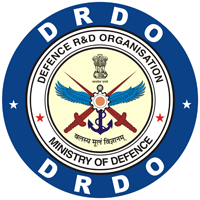Macro micronutrients and Antioxidant Potentials of Plants and Fungal based Food from Tawang Area Arunachal Pradesh India
DOI:
https://doi.org/10.14429/dlsj.4.13811Keywords:
Finger millet Nori Pepper corn Common bean Mushroom Macro micro nutrients content Antioxidant potentialsAbstract
Certain variety of plants such as vegetables, spices and seaweed are abundantly being grown in high altitude cold desert region of Tawang in Arunachal Pradesh, India. Therefore, five different vegetables, spices and seaweed were taken from that particular cold region viz., finger millet, nori seaweed, pepper corn, bean and mushroom have been selected based on the higher consumption of people of Northeast (NE) India for the proximate analysis, mineral, antioxidant and vitamin contents. So far, there is no nutritional composition studies have been carried out with available vegetables, spices and seaweeds growing in NE. For this reason, this study was undertaken to determine the macro and micro nutrients and antioxidant potential of these plant foods. Different analyzed varieties were significantly different for proximate composition and mineral content, and each variety showed significant differences. Common bean showed higher percentage of protein with 35.09% and fat percentage of the finger millet is higher (9.2%) as compared to other varieties from other regions (1-1.5%). Higher crude fibre was assessed in mushroom with 47.77% followed with pepper corn (38.42%), bean with 30.987%, and finger millet (5.14%).Calcium was higher in finger millet with 225 mg per 100g whereas iron content was higher in mushroom with 652 mg followed with beans (543 mg), pepper corn (408 mg per 100g). Higher amount of polyphenols observed in finger millet with 8.716 µg (GAE)/mg and highest total flavonoids in pepper corn with 48.196 µg (RU)/ml. Likewise, highest FRAP in finger millet noticed with 72.0 µg of FeSO4 equivalent /mg and reducing power (ascorbic acid equivalent /mg) in mushroom (244.0) and pepper corn (242.0). All samples had higher metal chelating activity between 86.657- 83.383 IC50 µg. Similarly, higher amount of vit B6 was noted in pepper corn with 197.0 mg while lowest in seaweed with 1.76 mg/100gm.
Downloads
Published
How to Cite
Issue
Section
License
where otherwise noted, the Articles on this site are licensed under Creative Commons License: CC Attribution-Noncommercial-No Derivative Works 2.5 India

